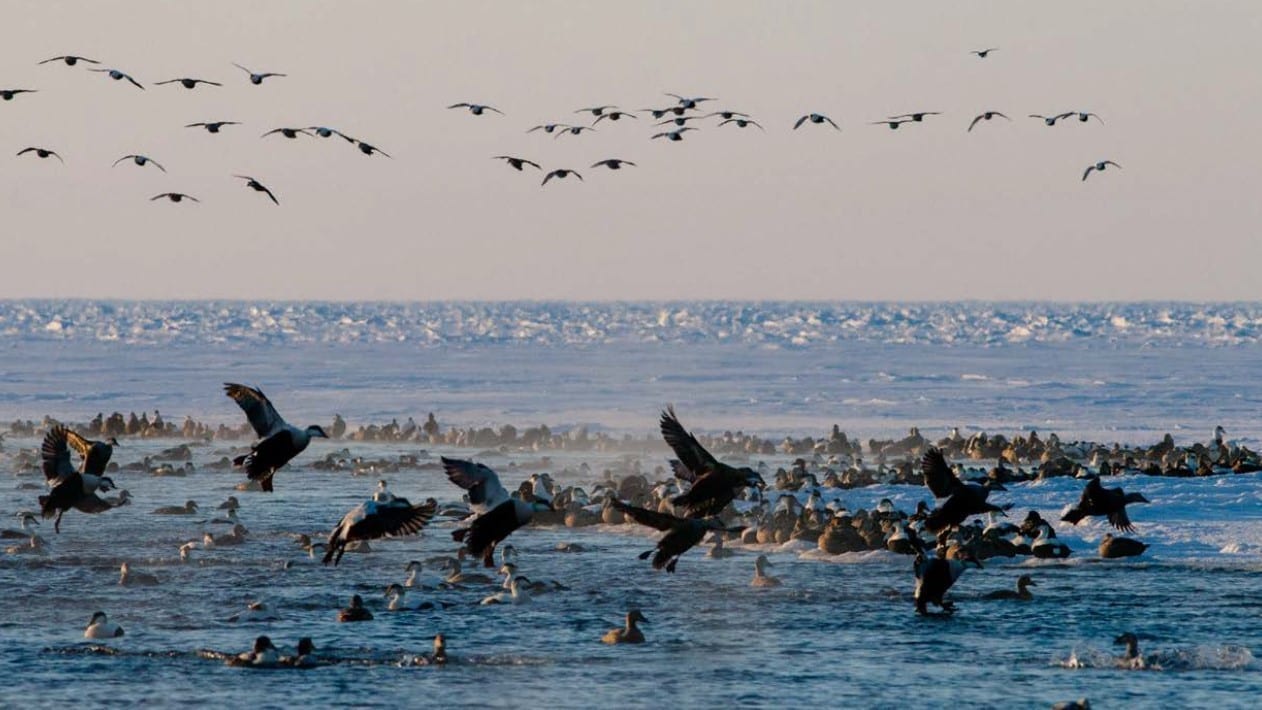A Sanikiluaq partnership is receiving $5.5 million from the federal government to help fulfill the vision of building a multi-purpose research facility and a community-driven stewardship and monitoring program for the Belcher Islands.

photo courtesy Joel Heath/Arctic Eider Society
"We've been working on this for a long time and creating a protected area for the Belcher Islands will have a big impact for our community, hunters and youth. These islands are a special place in the heart of Hudson Bay, and we islanders do things different," stated Lucassie Arragutainaq of the Sanikiluaq Hunters and Trappers Association (HTA), one of three partners.
"This project will be a unique made-in-Sanikiluaq approach to protecting the region, and we’ll be working closely with QIA (Qikiqtani Inuit Association), and a whole-of-government approach to protect both the water and the land around our islands."
The project, Qikiqtait, includes as partners the Municipality of Sanikiluaq and the Arctic Eider Society (AES).
"This investment in Sanikiluaq will create jobs, and build capacity for the future. It will guide youth to become stewards and mentors for the Belcher islands and its unique culture and rich wildlife, and protect it for generations to come," stated Mayor Elijassie Kavik.
Arragutainaq is a co-founder of the Arctic Eider Society, along with executive director Joel Heath. The Qikiqtait team is made up of more than a dozen people from the community of Sanikiluaq, academia, and society staff.
"The documentary film, People of a Feather (2011), helped bring the unique relationship between the community of Sanikiluaq and the Arctic eider duck to the world," stated Heath.
"Developing community-driven research capacity in Sanikiluaq will create jobs, empower youth, contribute to intergenerational learning and conserve this unique environment for the future. This award was only possible because of the amazing and progressive work done by the Sanikiluaq HTA and hamlet over the last 30 years, and this recognizes their efforts and will finally help address their priorities for stewardship and protecting this unique and wonderful region of Canada."
Qikiqtait will build on decades of innovation the community of Sanikiluaq has undertaken in the areas of research, monitoring, wildlife preservation and conservation, according to the news release.
"The project will provide critical infrastructure to the community necessary for pre-implementation activities and long-term stewardship of the region. It will also develop community-driven research and guardians-style programs to steward the region, train youth, facilitate knowledge transfer and advance the local conservation economy. It will use novel tools including the award-winning SIKU.org platform and mobile app, and support self-determination and reconciliation," the partners state.
Announced in December 2018, the $500 million Canada Nature Fund was created to support the protection of Canada's ecosystems, landscapes, biodiversity, and species at risk. Up to $175 million was made immediately available, via proposals, to establish Indigenous-protected and conserved areas and other protected and conserved areas.
FACT FILE:
About Qikiqtait:
- The region is home to almost 900 community members, with a rich Inuit culture closely connected to the unique environment and diverse wildlife.
- The Hudson Bay common eider subspecies, for example, is endemic to the archipelago and can be considered an indicator species of change for sea ice ecosystems. While most birds migrate south, they remain on the archipelago in winter where they dive for food in sea ice habitats, in proximity to the connected habitats where they breed and nest in summer.
- The area covered by a potential Indigenous Protected and Conserved Area is critical habitat and important migratory flyway for over 53 species of birds with 19 species that breed in the summer on the islands and over 20 species of shorebirds.
- Walrus, seals, whales and polar bears are also key marine species found in the leads, polynyas and shorelines.
Source: Arctic Eider Society